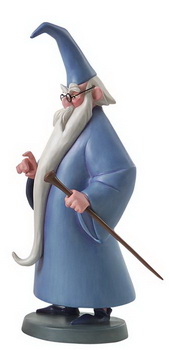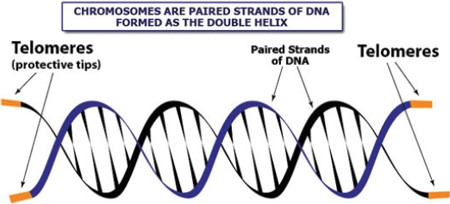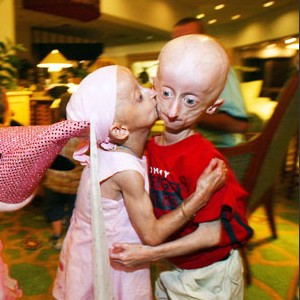Of Mice And Men And The Fountain Of Youth
On A Cat Aging
by Sir Alexander Gray
He blinks upon the hearth-rug
And yawns in deep content,
Accepting all the comforts
That Providence has sent.Louder he purrs and louder,
In one glad hymn of praise
For all the night’s adventures,
For quiet, restful days.Life will go on forever,
With all that cat can wish;
Warmth, and the glad procession
Of fish and milk and fish.Only – the thought disturbs him –
He’s noticed once or twice,
That times are somehow breeding
A nimbler race of mice.
I loved Merlin – King Arthur’s court wizard — when I was a kid and that was just about the time that Disney came out with “The Sword in the Stone.”
WOW – nearly 50 years ago!
Later I was to love the Arthurian legend in many deep and symbolic ways — love it so much that for a long time I kept a light-up, plug-in sword which was (actually, fairly easily) removed from a plastic pseudo-crystalline rainbow light-shooting stone. Doing so didn’t make me a queen of anything, though.
It is almost impossible, I think, to be human and anything more than partially literate without knowing the splendor of the Arthurian legend.
Fast forward to the present, and I am a wizard in my own way – a doctor. I wanted every patient to have the smiling sense of the Arthurian splendor that I had when I pulled that ersatz sword from the ersatz stone. Most of them did, until that piece, like many dear to me, was lost in a series of moves.
I survive more by thoughts than by any concrete objects, including that one.
But one of the things I most loved about that story, even as a child — one often considered insignificant enough to even be told — is that the aged and bearded Merlin ages backward. That’s right – although he always appears old in the movies and TV, he is only getting younger and who knows where that will end up?
I was at the “child-genius” stage of life then, and felt I was being told that I was too young to do or be or study mostly anything that fascinated or inspired me, so the idea of having whatever wisdom was associated with advanced age at my early age was at least, rather amazingly seductive.
Now, bringing us to the current day — on daytime commercial television, MSNBC, about midday, there was some seemingly diminutive sounding human who was supposed to be representing “Popular Science Magazine.”
My first exposure to this journal is vivid in my memory. I was a very tiny science lover when I picked it up at a supermarket check-stand and my mother pulled it out of the basket and replaced it on the shelf very quickly after I had put it in. My father of blessed memory (a Harvard-trained composer and arranger) had a classified advertisement in there, hoping to make some extra income by setting people’s poems to music, so I thought that made it fair play. My mother had only to thumb through it quickly to show me it was mostly about some kind of applied technology that appealed mostly to men, “souping up” fancy cars and the like.
So, LO! – these many years later — a representative from this magazine was on a show I never watch, and announced that somebody from Harvard was reversing aging.
That certainly caught my attention.
This was a knowledge gap in medicine and science that was at the very least unacceptable for me.
Here is the story I immediately found on the web — A Harvard publication for Harvard men whom I suppose, like my father of blessed memory, want to believe that all new knowledge starts at Harvard. Hmmm, even they seem to know this is at least partially an “accidental discovery.”
It sounded to me like the kind of thing that could happen when you were sitting around in a laboratory full of DNA bits in test tubes. Yes, it was long ago that I had seen such laboratories, and such test tubes.
Here is not really an article, for as far as I can figure this thing from October/November of last year is a pre-publication review.
“Nature” is perhaps the most prestigious journal on the planet for real scientific breakthroughs, and the Brits have been at this particular game for a very long time, so this is as believable as Holy Writ, if you are the kind of person who believes Holy Writ from anyplace, which is another question onto which I should not digress.
Someone tried to describe the commercial implications of this finding.
Sierra Sciences wants to exploit this commercially. Can you blame them?
I am going to tread fearlessly where even I have never gone before, and try to explain what is going on (even Wikipedia has nothing but jargon) because we need to know.
The only time that DNA strands get stretched out enough to look like the strands they are is when cells divide. Look at the picture – imagine taking a ladder and twisting it up. Normally they are coiled in the nucleus like some kind of a tangled ball of wool.
These complex structures – microscopically small — hold an incredible level of detail about our individual existences. There is, at their ends, a bit of DNA that seems to remain squinched up (if I may use a scientific term), but that is exquisitely visible during cell division.
This squinch bit is called a “telomere.”
In the days long ago when while Noah was building his ark and I was studying medicine, we were taught that their function was unknown. In more recent days they have been discovered to hold repetitive DNA sequences that tell the DNA to stop reproducing itself.
Every DNA-reproducing enzyme known to this point seems to go not only start in the middle of the molecule, but to proceed in the same direction, toward this “telomere” in the end.
These end telomere sequences have been not only known but reproduced for plenty of species. Perhaps the most popular species in such studies ends up being the laboratory mouse, as they reproduce easily in university laboratories, don’t seem to be picky about whom they mate with, give birth quickly and easily and are ready to do it again.
In hopes that I don’t dash your hero-worship of me, I must admit it has been 30 years or so that the world has suspected or known what I recently found out. Everyone from the Russians to a Harvard team has been working on this.
The older an experimental animal — such as a mouse — gets, the more “mistakes” are made in the reproduction of the telomere. This is so strong a finding that there is a “telomeric” theory of aging and people seem to know exactly how to produce aged and decrepit mice before their time — by destroying the telomere.
If you think that sounds like going the wrong way – well, that’s how science works. If they can make the mice old and feeble, they know that whatever the reverse process is can (maybe?) make them younger. You might remember how I caused cancer in a potato and won a science fair when I was young and precocious.
I mean, Typhoid Mary had nothing on me — at least in the potato patch.
What the Harvard guys did was reconstitute the telomere for some telomere-damaged mice. I guess they (and everyone else) expected to slow or maybe halt aging in mice.
What they did instead seems to have been to — Reverse it! Like Merlin.
If this is true, then I think it is the biggest finding in medical research, since — well Fleming found the bacterial cultures in his laboratory had places where bacteria would not grow, and (accidentally) discovered antibiotics.
Of course, scientists from all over are questioning the telomere miracle, and it is never possible to tell how much of the criticism comes from the jealous and competitive colleagues who wish they had found it first, and how much is real.
Science is very much like politics, and academic science can become extremely dirty politics. That’s why I’m not Professor Goldstein any more.
The obvious question is how much somebody can extrapolate from their model of mouse-aging to human-aging?
Me, it is well known that I think more like a doctor than like a researcher — although I enjoy the thinking involved in both — but I think the easiest thing in the world would be to test some living cells (not hard to collect, whether serum or mouth swab, I should think) from someone who has Progeria (Hutchinson-Gilford syndrome), the premature-aging disease.
Nobody seems to have actually published this study in the National Library of Medicine, but I would sure want proof of the relevance of this research to the human before sinking more money into it.
I think there is probably some validity in this approach, from all I can figure. Ownership by a private company will be a transitory stage. I suspect the way our government is set up, this will be available only for the elite.
I will be trying to save my pennies as I suspect the elite will be decided more on such basis than by brains.
After all Dick Cheney is the only person over 55 I have heard of who might get a heart transplant — what with most people over 55 being told they are not eligible. (And still they claim there is no health care rationing …)
Scientifically, this technology got a way to come. That which may be started should also have a way to be stopped. I mean, what if rich elite oldsters become 19-year-old hoodlums — then, problem babies?
As for me, I dream already of what Merlin could have done if he were a wise and learned older woman.
One last note: a “spam” in my email was, coincidentally about a company selling a supplement they call “the fountain of youth” and they tie it in with telomeres. The advertising copy quotes Dr. Oz stating that aging takes place when cells can no longer divide and makes sure they mention he’s one of Oprah’s anointed . They stop short of claiming that Oz or Oprah actually recommend their product.
That was Jan. 11. By March 9, the page had been taken down from the web site.
I can think of no reason whatsoever it would work, no way to determine effective dose, nothing, really, but — Caveat Emptor! (That’s Latin for “Let the buyer beware”).
Filed under Aging by on Mar 9th, 2011. Comment. ![]()
Leave a Comment




Comments on Of Mice And Men And The Fountain Of Youth
cool blog… I learned huge from it. thanks admin.